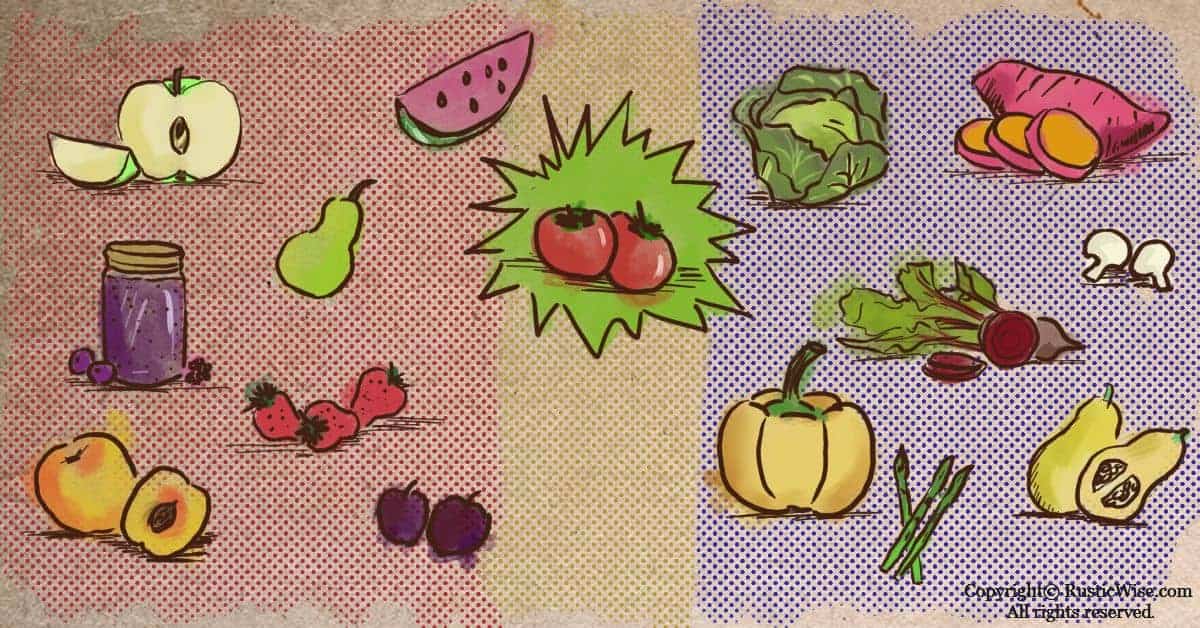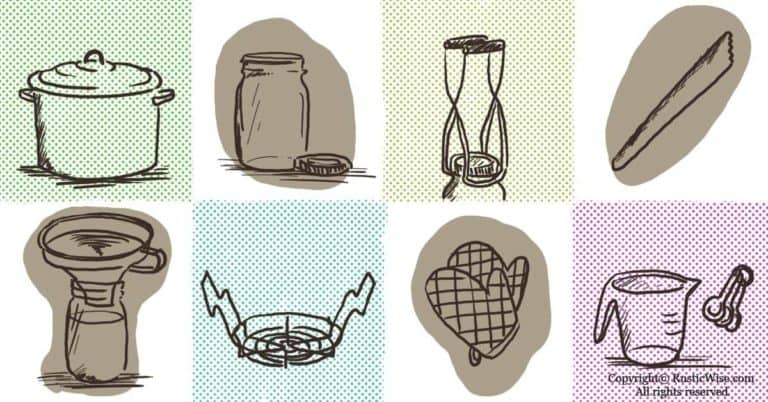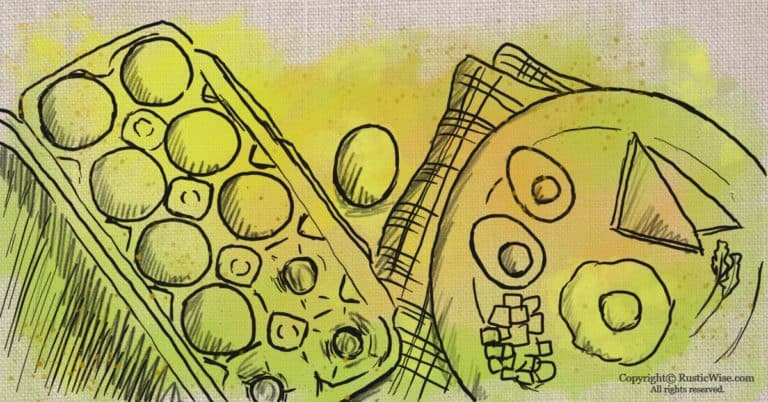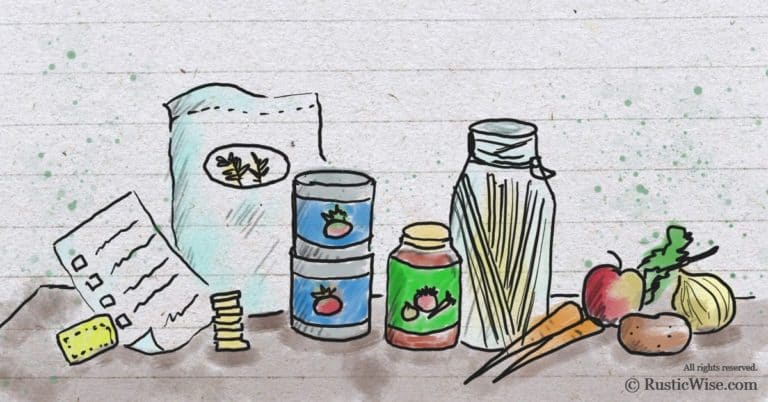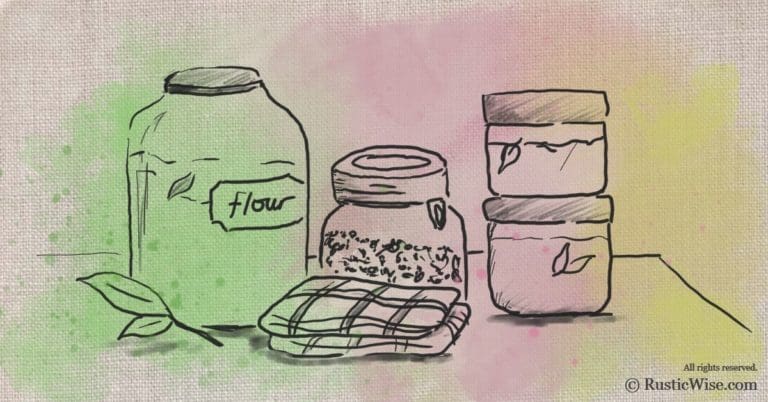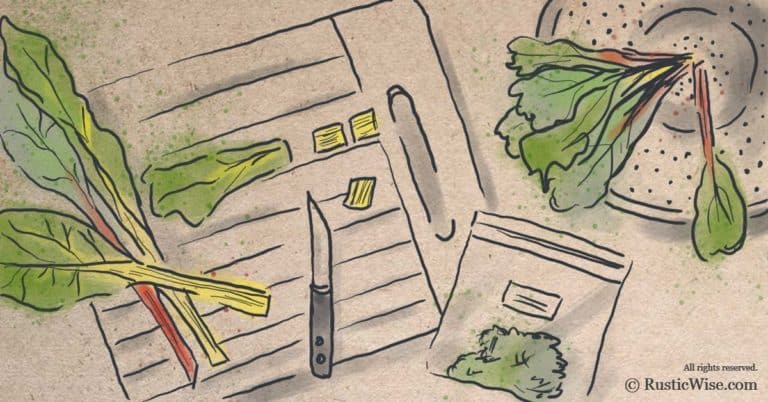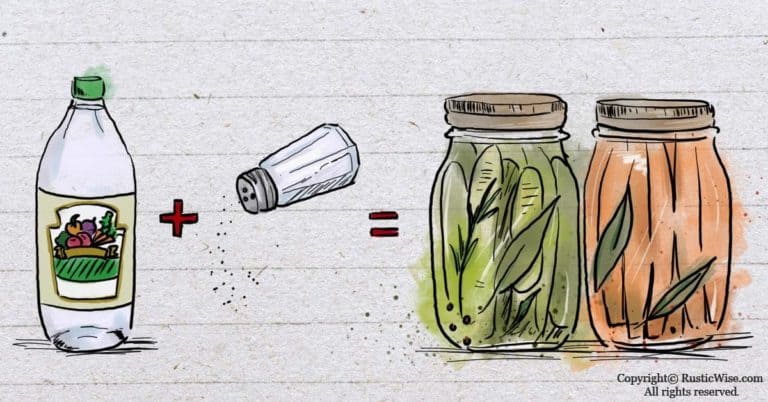Safe Canning Tips: A Look at pH for Canning and Acidity
There are countless canning recipes, but there is one thing that all good recipes rely on: proper pH for canning. The term pH stands for “power of hydrogen,” and it’s a measure of acidity or alkalinity on a scale from 0–14 where 7 is neutral. The lower the number, the more acidic something is, and the higher the number, the more alkaline it is. When you’re canning foods at home, you want to make sure your food has an appropriate level of pH so that harmful bacteria won’t grow while jars are sitting on your shelf!
As with any form of food preparation, there are a few safety precautions you should be aware of when canning foods at home—namely the pH and acidity levels. The pH level in foods determines if it’s low or high acidity which determines how the food should be processed: water bath canning or pressure canning.
We’ll take a look at why pH matters when canning food as well as some tips on how to preserve your own canned foods to keep harmful bacteria like Clostridium botulinum at bay.
A closer look at pH for canning and acidity
The fundamental pillar of safe canning is determining a food’s acidity or pH level (level of acidity). For safe canning, the first step you should take is to determine if your food has a high or low acidity level.
As a refresher, the pH scale ranges from 0–14. A pH of 7 is considered neutral; pure water is a 7. Anything below a pH of 7 is considered acidic, while anything above 7 is considered basic or alkaline.

The important (and somewhat confusing) thing to remember is that low-acid food has a high pH, and a high-acid food has a low pH.
Examples of acidic foods include: apricots, apples, blackberries lemons, sour cherries, plums, peaches, pears, pickles, and sauerkraut.
Foods with low acidity include: most vegetables, dairy products, meat, poultry, seafood, soups, stews, and sauces.
You can safely process most acidic foods in a water bath canner. Foods with low acidity must be processed in a pressure canner which uses both higher heat AND the appropriate pressure to kill off harmful pathogens.
Tip: The magic number, or in this case, pH level is 4.6. Foods with a pH higher than 4.6 are considered low-acid and must be processed in a pressure canner. Foods with a pH below 4.6 are considered high-acid, and you can safely process using boiling water.
Why it’s important to follow a reliable recipe
Home cooking is all about creativity right? Maybe. But when it comes to canning and preserving foods it’s best to stick to the recipe. And not just any old recipe will do—many older recipes rely on outdated practices and preservation methods that could be unsafe. So that canning recipe handed down for generations in your family may be unsafe by today’s standards.
As you can imagine, finding out the exact pH level of the food you’re canning is sometimes tricky. While you can use various methods like a pH meter, or pH strips, these aren’t always accurate, nor easy to use.
That’s why finding (and carefully following!) a reliable recipe is crucial. Solid recipes take everything into account: processing method (water bath vs. pressure canner), processing time (adjusted for altitude), acidity/pH levels, size of jar, and of course overall taste!
A good place to find recipes is in the Complete Guide to Home Canning by the United Sates Department of Agriculture (USDA).
You could also check out recipes from makers of canning supplies such as Ball and Kerr, or Bernadin.
Things you should never do when following a canning recipe:
- Alter the amount of vinegar, sugar, lemon juice, or salt: These four ingredients are typically used as preserving agents. If you alter the amount of any one of them, it could cause your food to spoil prematurely, have a pungent taste, or worse—develop botulinum bacteria.
- Add (or omit) anything else: While it’s tempting to throw in an extra onion or two to a salsa recipe, doing so will change the pH balance in the recipe.
Tip: Most herbs or seasonings in recipes are for flavoring purposes. So you can add more seasoning if you feel the recipe needs some oomph.

Low-acid vs. high-acid foods
Here’s a handy table outlining the pH level of common foods. You’ll see that there’s a pH range of foods. This is because the pH levels change according to the food’s growing environment, ripeness, method of processing (raw or cooked), and different varieties within the same food.
You’ll see that a Golden Delicious apple has a different pH than a McIntosh apple.
Tip: Remember that foods with a pH below 4.6 can be processed in a water bath, while foods with a pH above 4.6 must use a pressure canner.
Table: pH Levels of Common Foods
| Food | pH Level |
|---|---|
| Apple, eating | 3.30–4.00 |
| Apple – Delicious | 3.9 |
| Apple – Golden Delicious | 3.6 |
| Apple – Jonathan | 3.33 |
| Apple – McIntosh | 3.34 |
| Apricots | 3.30–4.80 |
| Artichokes | 5.50–6.00 |
| Asparagus | 6.00–6.70 |
| Avocados | 6.27–6.58 |
| Baby corn | 5.20 |
| Beans | 5.60–6.50 |
| Beets | 5.30–6.60 |
| Blackberries, Washington | 3.85–4.50 |
| Blueberries, Maine | 3.12–3.33 |
| Broccoli | 6.30–6.85 |
| Brussels sprouts | 6.00–6.30 |
| Cabbage | 5.20–6.80 |
| Cantaloupe | 6.13–6.58 |
| Carrots | 5.88–6.40 |
| Cauliflower | 5.6 |
| Celery | 5.70–6.00 |
| Cherries, California | 4.01–4.54 |
| Cherries, Royal Ann | 3.80–3.83 |
| Corn | 5.90–7.50 |
| Cucumbers | 5.12–5.78 |
| Cucumbers, dill pickles | 3.20–3.70 |
| Cucumbers, pickled | 4.20–4.60 |
| Eggplant | 4.5–5.3 |
| Figs, Calamyrna | 5.05–5.98 |
| Honey | 3.9 |
| Lemon juice | 2.00–2.60 |
| Loganberries | 2.70–3.50 |
| Mangoes, ripe | 5.80–6.00 |
| Mangoes, green | 3.40–4.80 |
| Mushrooms | 6.00–6.70 |
| Nectarines | 3.92–4.18 |
| Okra, cooked | 5.50–6.60 |
| Olives, black | 6.00–7.00 |
| Onions, red | 5.30–5.880 |
| Onions, white | 5.37–5.85 |
| Onions, yellow | 5.32–5.60 |
| Parsnip | 5.30–5.70 |
| Peaches | 3.30–4.05 |
| Pears, Bartlett | 3.50–4.60 |
| Peppers | 4.65–5.45 |
| Plums, Blue | 2.80–3.40 |
| Plums, Red | 3.60–4.30 |
| Potatoes | 5.40–5.90 |
| Prunes | 3.63–3.92 |
| Pumpkin | 4.990–5.50 |
| Radishes, red | 5.85–6.05 |
| Radishes, white | 5.52–5.69 |
| Rhubarb | 3.10–3.40 |
| Sauerkraut | 3.30–3.60 |
| Spinach | 5.50–6.80 |
| Squash, acorn, cooked | 5.18–6.49 |
| Squash, white, cooked | 5.52–5.80 |
| Squash, yellow, cooked | 5.79–6.00 |
| Strawberries | 3.00–3.90 |
| Sweet potatoes | 5.30–5.60 |
| Tomatoes | 4.30–4.90 |
| Vinegar | 2.40–3.40 |
| Vinegar, cider | 3.10 |
| Watermelon | 5.18–5.60 |
| Zucchini, cooked | 5.69–6.10 |
What about foods close to pH 4.6?
Tomatoes are food that’s considered in the gray zone: not quite acidic and not quite basic.
As such, they require special treatment. Most home canners prefer to use water bath processing as not everyone has a pressure canner at home. To make tomatoes safe for a water bath canner, some recipes will increase the acidity by adding more vinegar or citric acid (lemon juice).
Once the acidity levels are within a safe range (below pH 4.6), foods like tomatoes can safely be canned using boiling water.
Other low-acid fruits such as watermelon and cantaloupe require pickling first before processing in a water bath canner.
What causes food spoilage?
To prevent food spoilage, it’s helpful to understand the different nasties that cause food to spoil in the first place. The All New Ball Book of Canning and Preserving lays out some helpful information. Here are a few common ways that canned food spoils.
Molds and yeast
Molds are often visible, but are also sometimes invisible. Some molds are benign while others may create toxic mycotoxins. Yeast is a type of fungi that causes foods to ferment (which is not a good thing once food has been processed).
In low-pH foods, molds and yeasts may continue to grow if canned food is not processed properly. In large numbers, molds and yeast make food dangerous to eat.
Molds and yeast are destroyed at temperatures between 140 and 190 degrees Fahrenheit (60 to 90 degrees Celsius). This is the required temperature that high-acid foods using the water bath method are safely preserved at.
Bacteria
Unfortunately, bacteria is not so easily killed. Certain strains of bacteria can withstand heat that kills yeast and mold.
In fact, some types of harmful bacteria thrive at temperatures that kill yeast and mold. When combined with favorable environmental conditions (moisture and a lack of oxygen), this spells trouble for canned foods.
Two such types of bacterium are Staphylococcus aureus (staph bacteria), and Clostridium botulinum. The spores of these two bacterium produce harmful toxins.
According to the Centers for Disease Control and Prevention (CDC), staph food poisoning often occurs when food is kept at the danger zone between 40 and 140 degrees Fahrenheit (4 and 60 degrees Celsius) for more than 2 hours.
Botulism is often a result of botched canning jobs such as improper processing times or methods. Botulism poisoning is something that is especially dangerous—this type of food poisoning can be fatal if not caught soon enough.
Fortunately for those worried about botulism, it’s fairly rare and can be prevented with proper food safety practices. You can kill botulism spores by carefully following your recipe and adjusting for altitude changes.
Enzymes
Found in all living matter, enzymes are tiny proteins that are the agents which promote changes in food and in our bodies. When left activated, enzymes can cause food to spoil quickly.
Enzymes are fairly easy to deactivate through heat starting at temperatures 140 degrees Fahrenheit (60 degrees Celsius) and up.
How to beat botulism
When canning, it’s important to know the proper acidity and pH for canning foods to keep the threat of botulism at bay.
High-acid foods are able to safely diminish harmful pathogens when processed using a water bath canner at 212 degrees Fahrenheit (100 degrees Celsius). Foods with naturally low-acid levels need additional heat to effectively kill botulinum spores. This is why a pressure canner is an essential when canning low-acid foods like most veggies, meat, poultry, and seafood.
At what temperature does botulism die at? According to the National Center for Home Food Preservation (NCHFP), low-acid foods need processing at temperatures between 240 and 250 degrees Fahrenheit (116 to 121 degrees Celsius). This is achieved when pressure canners are set to between 10 and 15 PSIG (pounds per square inch of pressure as measured by gauge). Processing times of foods varies from 20 to 100 minutes.
The takeaway: proper acidity and pH for canning are essential
Different foods require different canning methods. Low-acid food (vegetables and meat) must be processed in a pressure canner to safely remove any risk of botulism. High-acid foods like jams and jellies can be processed using boiling water in a water bath.
Botulism is more common in low-acid foods. If you want to safely process low-acid foods like vegetables and meats, make sure to set your pressure to between 10 and 15 PSIG and ensure temperatures reach 240 to 250 degrees Fahrenheit (116 to 121 degrees Celsius).
Knowing what is considered an acidic or basic pH level will help ensure your safety when canning. Remember that anything higher than pH 4.6 is considered low-acid and must be processed in a pressure canner. Foods with a pH below 4.6 are considered high-acid and can be safely processed using boiling water.
Related questions
Does lemon juice kill botulism?
No, lemon juice by itself does not kill botulism. What lemon juice does is increase the acidity of foods. Foods that are higher in natural acids do not provide an ideal environment for botulinum spores to reproduce. When canning tomatoes for example, you can add lemon juice to lower the pH of the tomatoes in order to make them safe to process using a water bath canner rather than a pressure canner.
The safe pH level for foods to be processed using boiling water is pH 4.6 or lower.
Why is vinegar used to preserve foods?
Vinegar (along with sugar, salt, and citric acid/lemon juice) is a powerful preserving agent when it comes to canning foods. It helps to control the pH level of pickles and other foods.
Vinegar is very acidic—it has a pH of 2.40-3.40 depending on the type of vinegar used. As you may know, foods that are considered high-acid (anything with a pH of 4.6 or lower) can be safely processed in a water bath canner. Vinegar is essential to many pickling recipes. Besides preserving foods, vinegar also helps to add some mouth-puckering flavor to your favorite foods!
👉 If you like this post, see our Ultimate Guide on How To Can Food. 🍎
Would you like more timeless tips via email?
Fun tips to help you live an independent, self-sustaining lifestyle. Opt-out at any time.


References:
- National Center for Home Food Preservation (NCHFP), Ensuring Safe Canned Foods, https://nchfp.uga.edu/how/general/ensuring_safe_canned_foods.html. Accessed May 2021.
- United States Department of Agriculture (USDA), Complete Guide to Home Canning, https://nchfp.uga.edu/publications/publications_usda.html. Accessed May 2021.
- Clemson University Cooperative Extension, pH Values of Common Foods and Ingredients, https://www.clemson.edu/extension/food/food2market/documents/ph_of_common_foods.pdf. Accessed May 2021.
- The All New Ball Book of Canning and Preserving: Over 350 of the Best Canned, Jammed, Pickled, and Preserved Recipes (2016). 1st edition. pgs. 10-11. Heathmark, LLC dba Jarden Home Brands. ISBN-10: 0-8487-4678-3.
- Centers for Disease Control and Prevention (CDC), Staphylococcal (Staph) Food Poisoning, https://www.cdc.gov/foodsafety/diseases/staphylococcal.html. Accessed May 2021.

Author: Theresa Tesolin
Theresa is co-founder of RusticWise. She helps people unleash their inner DIY spirit by encouraging them to get dirty and make or grow something from scratch.

